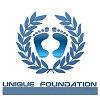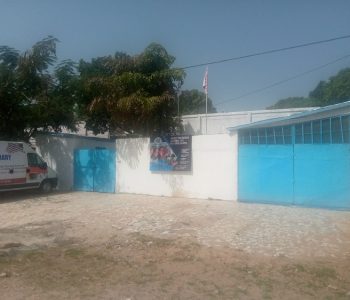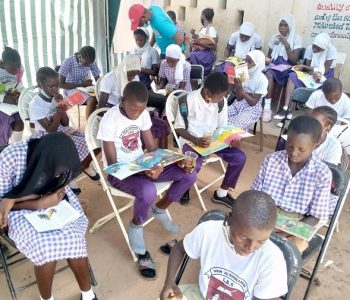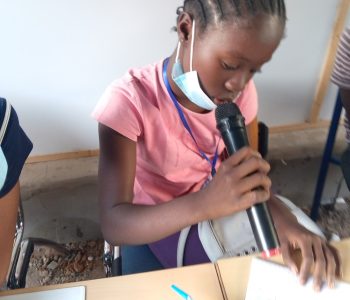58.8
Life expectancy
67.8
Economic Vulnerability Index
49.2
Human Assets Index
165
Human Development Index Rank
0.32
Multi-dimensional Poverty Index
50%
Adult literacy rate (2010)

About The Gambia
The Gambia is one of the smallest countries in West Africa, surrounded by the Republic of Senegal in all sides except the Atlantic Coast. The country stretches approximately 400 km eastwards, and its width varies between 80km at the Atlantic and about 28km in the inland east. The country is divided horizontally by the River Gambia and the total land area is 11,295 square km, 50 percent of which is arable land.
The climate has Sudano-Sahelian characteristics of short rainy seasons with rainfall varying from 900 mm to 500 mm and between 14degrees C to 40 degrees C. The population is approximately 1.7 million alongside a fairly high rate of growth at 2.8% per year over the last decade of which a youthful population (aged 0 -34) form the bulk of the population at almost 63%.
The country is the fourth most densely populated in mainland Africa as the population density was at 142 in 2006, 146 in 2008, 150 in 2009, 154 in 2010 and 158 in 2011. In that respect, The Gambia is only surpassed by Rwanda, Burundi and Nigeria in that order. The main languages are English, Mandinka, Wolof, Jola and Fula, and 90% of Gambians are Muslim.
The Gambia’s economy is predominantly agrarian with a low per capita income of approximately US $510 in 2013. The economy is primarily dominated by services and agriculture, which account for 59 percent and 29 percent of GDP respectively. Agriculture employs about 44 percent of the population.
Most of the population (57%) is concentrated around urban and peri-urban centers. The Gambia has maintained a reputation of relative stability and peace, although its sub-region has been marked by recurring instability and conflict.
History
A presidential republic with a unicameral legislature, the Gambia gained Independence from the United Kingdom on 18th February 1965. President Yahya A.J.J. Jammeh, the incumbent, came to power on 22nd July 1994 in a bloodless coup in 1994, contesting four elections with 72% of the vote in his fourth and most recent election victory on November 24, 2011.
On March 29, 2012, the President’s party the Alliance for Patriotic Reorientation and Construction, or APRC won a large majority of the popular vote in the National Assembly elections.
With a reputation for peace and stability, The Gambia has avoided the instability and conflict marked in the sub-region and maintained a reputation of relative stability and peace, despite the sub-region’s recurring instability and conflict.
Challenges
Progress towards most Millenium Development Goals (MDGs) is off-target. For example infant and child mortality, measles vaccination and births not attended by skilled staff are seriously off-target. It is not envisaged that they will be reached any time soon if current policies are continued and donor support is maintained at current levels.
The economy has over the past several years performed well though recovery from the 2010/11 drought and humanitarian challenges has hampered this. The drought and humanitarian challenges of 2010/11 resulted in a huge drop in crop production leading to severe tightening in real Gross Domestic Production (GDP) in 2011.
Strong economic performance in recent years underpinned by average annual real gross domestic product (GDP) growth of 6-7% during 2008-2010 dropped to 5.3% in 2012, but closed on a re-bound at around 6.4% in December 2013
Domestic cereal production accounts for only up to 60 per cent of annual consumption requirements and the country relies heavily on food imports, especially rice, which is the main staple food.
Foreign exchange earnings are based primarily on groundnut exports, tourism and remittances meaning that the relatively undiversified economy makes The Gambia highly vulnerable to external shocks exacerbating the need for aid support to the economy
Despite growth picking up in 2012 and 2013, balance of payments weakness persist and remain a challenge placing equally severe pressures on the Gambian dalasi. Compounding this problem has been unclear and uncertain economic policies intensifying pressure on the Gambian Dalasi
“Over the medium term, the main challenges for The Gambia are to strengthen economic and financial stability, enhance growth prospects, and reduce poverty, in line with the authorities ’Programme for Accelerated Growth and Employment (PAGE)” to quote the IMF in one of their reviews of The Gambian economy in mid-2013.
Successes
In the aftermath of the 2010/2011 drought and humanitarian challenges, The Gambia has been able to demonstrates ongoing economic recovery achieving strong growth and substantial poverty reduction in recent years
• Overall poverty rates declined from 58% in 2003 to 48.4% in 2010 and education coverage and quality improved After reaching the Highly Indebted Poor Countries (HIPC) Completion Point in December 2007, The Gambia benefitted from considerable multilateral debt relief
• The impact and effect of the global financial crisis (2008) were mitigated by strong agricultural outputs and a corresponding strong performance in increased tourism receipts
• In relation to the MDGs, meeting the goal of poverty reduction at the line of $1.25 has been achieved
• The Gambia has also met the MDGs related to gender parity in primary and secondary education and improved access to water sources
• Considerable progress has been made in relation to the MDGs for primary school completion rates
• The Value Added Tax (VAT) system was introduced with support from development partners notably UNDP and the IMF in their September Statement on economic progress in The Gambia, commended the successful implementation of the VAT and also inroads made in removing overtime, fuel subsidies.
• Collective efforts through interventions from development partners to ensure robust economic statistics have been developed and strengthened to ensure effective public management of finances
• Progress was also registered in the banking sector which remains adequately capitalized, resulting from a two-step increase in the minimum capital requirement which was implemented at the end of 2010 and 2012 respectively.



